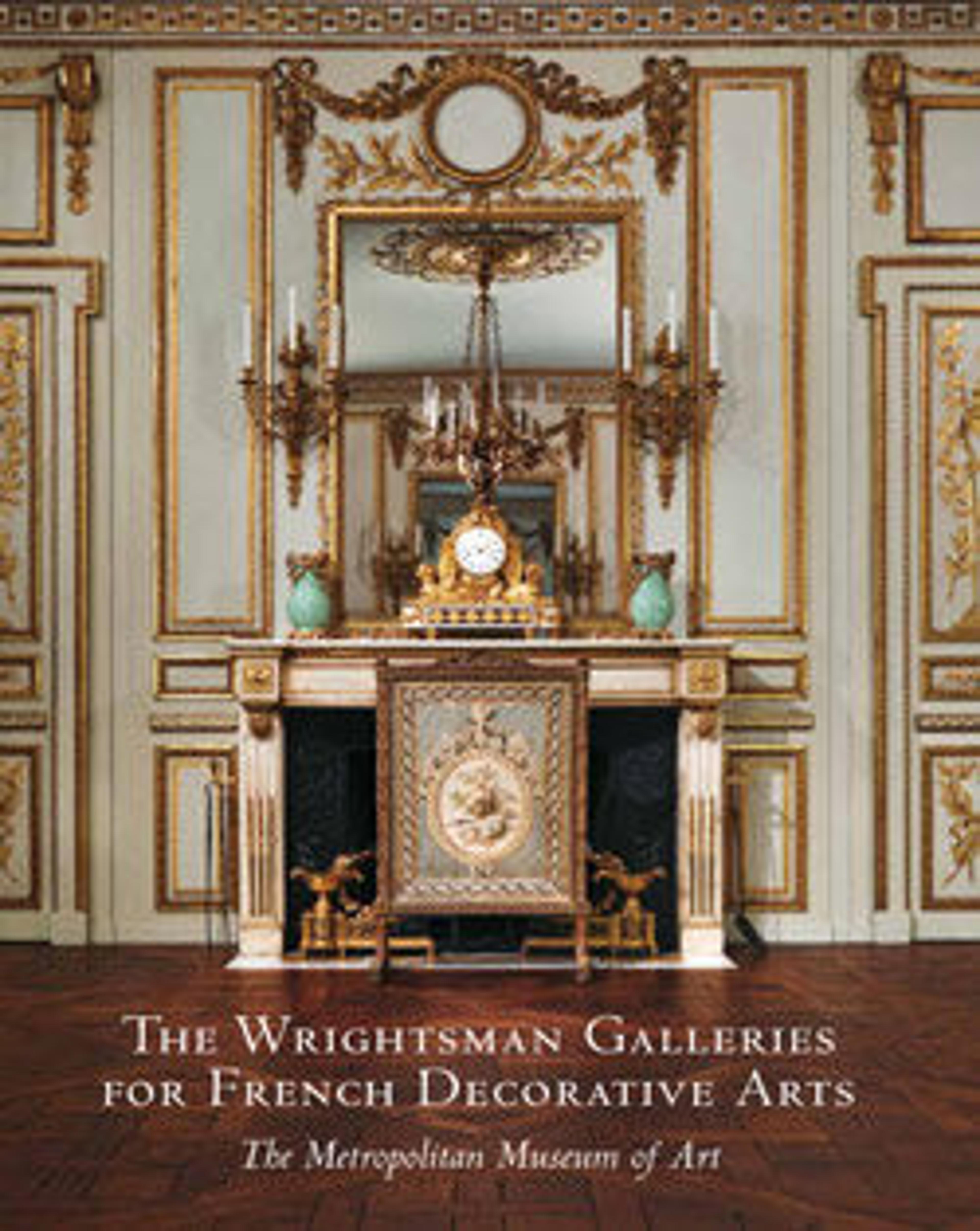Grand Salon from the Hôtel de Tessé, Paris
Following a disastrous fire, the residence at 1, quai Voltaire, was rebuilt between 1765 and 1768 at the behest of the widowed Marie-Charlotte de Béthune-Charost, comtesse de Tessé (1713–1783), and her son René Mans de Froulay (1736–1814), who had acquired the ruined building on the condition that a new mansion would be constructed. Although contemporary guidebooks credit the designs to the architect Pierre-Noël Rousset (1715–1793), it appears that the architect-contractor Louis Le Tellier (ca. 1700–1785) was primarily responsible for the creation of this Paris house with its dignified facade, still standing today on the left bank of the Seine, near the Pont du Carrousel. Since the accounts were not settled until April of 1772, it is likely that the interior decoration was not completed before then. The Museum’s paneling with its refined carving in the Neoclassical style was the work of woodworker Nicolas Huyot, a maître menuisier about whom little is known.
The carving was done by the sculptor Pierre Fixon or his son Louis-Pierre, or perhaps the two in collaboration. The Fixons may also have created the plaster overdoor reliefs representative of the four seasons. The marble sculptor Jean-Baptiste-Antoine Le Franc, who like the Fixons had worked with Le Tellier on various other projects, was responsible for the blue turquin marble mantelpiece, which is original to the room. The paneling acquired by the Museum decorated the largest of the formal reception rooms that were aligned, or laid out en enfilade, on the first floor of the building (the American second floor). Particularly beautiful are the coffered triumphal arches executed in perspective that frame the four mirrors and are crowned by laurel branches and floral wreaths. The 1783 inventory drawn up after the death of the comtesse de Tessé indicates that this room was called the Salle du Dais (Canopy Room) after the large tester or canopy that must have been mounted on the wall opposite the windows. Underneath this crimson damask tent, which was enriched with gold embroidered appliqués of the Tessé family coat of arms, the comtesse or her son presumably received their guests. Although not of royal birth, Madame de Tessé was the widow of René Mans de Froulay (1707–1742), comte de Tessé and marquis de Laverdin, as well as a Spanish grandee. In addition to a sixleaf folding chamber screen, the room was furnished with twenty-nine chairs all covered with different crimson fabrics, a small veneered bookcase, and a gilt-bronze cartel clock with movement by Voisin. Several family portraits and two tapestries of landscape scenes were hung on the side walls. The 1783 inventory of the hôtel did not list any curtains in the room; perhaps none were hung, in order not to obscure the lovely view from the three large windows of the Seine and the Louvre and Tuileries palaces across the water.
Artwork Details
- Title: Grand Salon from the Hôtel de Tessé, Paris
- Maker: Made by Nicolas Huyot (1700–1791)
- Maker: Carved by Pierre Fixon (active 1748–88)
- Maker: and/or his son Louis-Pierre Fixon (born 1748)
- Maker: Chimneypiece by Jean-Baptiste-Antoine Lefranc
- Maker: Contracted by Louis Le Tellier (ca. 1700–1785)
- Date: ca. 1768–72, with later additions
- Culture: French, Paris
- Medium: Carved, painted, and gilded oak; marble; plaster
- Dimensions: H. of room 16 ft. (4.87 m), W. 29 ft. 6-1/2 in. (9 m), L. 33 ft. 7-1/2 in. (10.25 m)
- Classification: Woodwork
- Credit Line: Gift of Mrs. Herbert N. Straus, 1942
- Object Number: 42.203.1
- Curatorial Department: European Sculpture and Decorative Arts
Audio
110. Grand Salon from the Hôtel de Tessé, Part 1
Highlights Tour
Dies ist nun ein Interieur, das der Noblesse der Aristokraten, die wir in den Porträts gesehen haben, angemessen wäre. Die Innenräume des 18. Jahrhunderts waren legendär für ihre kostbare Ausstattung. Sehen Sie nur die Kristalllüster hier, das kunstvolle Mobiliar und die prachtvoll geschnitzte und vergoldete Holzvertäfelung. Wem solche Opulenz fremd war, der stand ihr mit Misstrauen gegenüber — und das galt besonders für die puritanisch veranlagten Amerikaner jener Zeit. Auf einer seiner beiden Europareisen schrieb der spätere amerikanische Präsident John Adams im Jahre 1778: „Mir drängt sich der Verdacht auf: je mehr Eleganz, desto weniger Tugend...“Ein Raum wie dieser hätte Adams Standhaftigkeit sicherlich auf die Probe gestellt. Alles ist auf Verführung und Bezauberung angelegt. Im Gegensatz zu dem Studiolo der italienischen Renaissance, das ich Ihnen vorhin gezeigt habe, dient dieser Raum der Geselligkeit — allerdings nur auf Einladung und im Kreis ganz besonderer Gäste. Die anmutige Dekoration setzt einen eleganten Ton, während die Einrichtung die gesellschaftlichen Interessen im 18. Jahrhundert widerspiegelt. Das große Porträt an der Wand stellt eine Frau beim Stimmen ihrer Harfe dar — ein Ausdruck der Liebe zur Musik; vor dem Kamin verweisen ein Keiler und ein Hirsch auf die Jagd; während die altmodische Uhr auf dem Kaminsims von Eros, dem Gott der Liebe, umschlungen wird. Auch der Sinn für Neues und Geistreiches wird angedeutet: An der linken Wand steht auf einem Tisch eine Büste des Philosophen und Schriftstellers Denis Diderot, der als Aufklärer für Kontroversen sorgte.In diesem Raum befinden sich große Kunstschätze; drücken Sie bitte die Play-Taste, um mehr darüber zu erfahren.
Listen to more about this artwork
More Artwork
Research Resources
The Met provides unparalleled resources for research and welcomes an international community of students and scholars. The Met's Open Access API is where creators and researchers can connect to the The Met collection. Open Access data and public domain images are available for unrestricted commercial and noncommercial use without permission or fee.
To request images under copyright and other restrictions, please use this Image Request form.
Feedback
We continue to research and examine historical and cultural context for objects in The Met collection. If you have comments or questions about this object record, please contact us using the form below. The Museum looks forward to receiving your comments.
